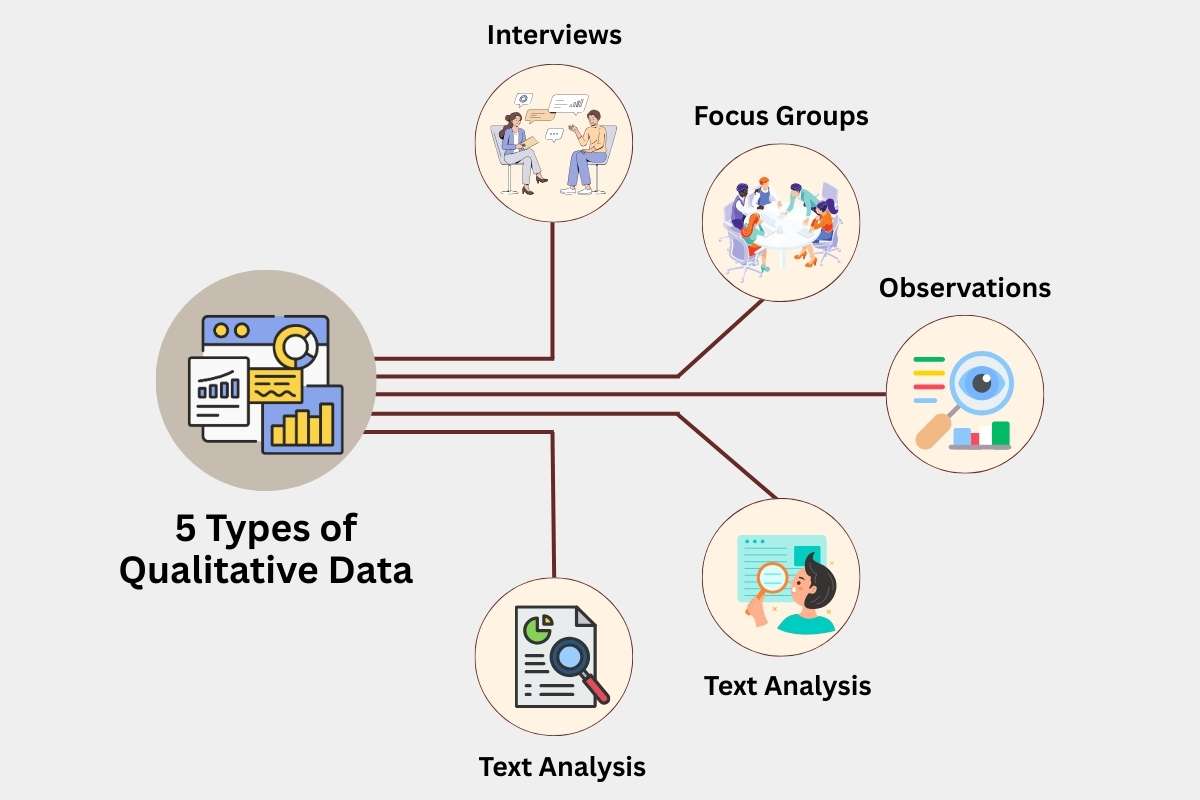Making smart choices depends on one key thing: data. If it’s a business trying to understand its customers or a doctor looking for the best treatment, data plays a big role. But not all data is the same. To understand what’s going on, we need to use both qualitative and quantitative data. These two types of data help us see the full picture, not just the numbers, but also the reasons behind them.
This article will explain what qualitative and quantitative data mean, why they matter so much in 2025, and how they are used in different ways with the types of each. If you want to understand the world better and make smarter decisions, keep reading. This article is just what you need.
What Is Qualitative and Quantitative Data?

Using both types of data gives a balanced view. While one explains the depth of a situation, the other shows the scale. Qualitative and quantitative data are two clear ways of collecting and analyzing information. Together, they bring clarity and direction to any research project.
- Qualitative data refers to non-numerical information. It focuses on understanding concepts, experiences, and opinions. This data helps researchers answer “why” and “how” something happens.
- Quantitative data is numerical. It deals with measurements, counts, and values. It answers the “what,” “where,” and “when” questions in research.
Why Are Qualitative and Quantitative Data Important in 2025?
Data will drive more decisions in 2025 than ever before. Companies, healthcare providers, educational institutions, and even individuals depend on exact information to act smartly. That’s why qualitative and quantitative data have become important tools for decision-makers. By using this Data, professionals can understand the reasons behind their decisions. That’s what makes this approach the gold standard for research in 2025.
These two types of data help us:
- Understand customer needs
- Improve healthcare outcomes
- Personalize learning in schools.
- Detect early signs of social changes.
- Forecast business trends
5 Types of Qualitative Data

Here are five common types of qualitative data used across industries. Each of these types adds depth to research. They highlight motivations, fears, needs, and preferences, details that numbers alone can’t reveal.
1. Interviews:
One-on-one interviews offer deep insights into personal opinions and experiences. They are used in market research, psychology, and user feedback studies.
2. Focus Groups:
These are guided discussions with a group of people. They provide different viewpoints on a topic and are useful in product testing and community research.
2. Observations:
Watching people in real settings reveals behaviors that surveys might miss. It’s common in educational and workplace studies.
3. Text Analysis:
Researchers analyze open-ended responses, social media posts, or journal entries. This helps detect emotions, patterns, or ideas.
4. Case Studies:
Detailed examinations of specific instances help explore complex issues in depth. They are widely used in legal, medical, and academic fields.
5 Types of Quantitative Data

Here are five key types of quantitative data that help measure what’s happening around us. Each of these helps track performance, find patterns, and support predictions. When used correctly, they turn raw figures into meaningful insights.
1. Counts:
This is the most basic form, how many people bought a product, visited a site, or attended a class. It’s simple but powerful.
2. Measurements:
Examples include height, weight, age, or temperature. These give precise values that can be compared over time.
3. Ratings and Scales:
Ratings on a 1 to 10 scale or star systems in reviews are numerical data that help assess opinions on a large scale.
4. Test Scores:
Used in schools and assessments, scores are a clear form of quantitative data that helps compare performance.
5. Surveys with Closed Questions:
Questions with fixed choices (Yes/No or multiple-choice) provide data that’s easy to analyze and visualize.
Where Are Qualitative and Quantitative Data Used in 2025?
The use of qualitative and quantitative data has become the norm in every sector. It ensures that decisions are both human-centered and data-backed.
1. Healthcare
Doctors and researchers use patient surveys and biometric measurements (quantitative) along with patient interviews (qualitative) to improve treatments.
2. Education
Teachers rely on test scores (quantitative) and classroom observations (qualitative) to enhance learning experiences.
3. Business
Marketers use sales data (quantitative) and customer reviews (qualitative) to create better campaigns and products.
4. Government and Policy
Public opinion polls (quantitative) and town hall meetings (qualitative) help design policies that truly meet community needs.
5. Technology Development
App developers collect usage data (quantitative) and user feedback (qualitative) to refine software.
The Future of Research Relies on Data Literacy
The ability to understand and use data will be as important as reading and writing in 2025. Both students and professionals are being trained to collect, interpret, and apply qualitative and quantitative data in their work.
New tools and software make it easier to analyze both types of data. From simple Excel sheets to advanced platforms like Tableau, researchers now visualize data faster and more clearly than ever before.
But tools alone are not enough. Understanding the story behind the data is the real skill. That’s where qualitative and quantitative data shine, one reveals the story, the other proves it.
Conclusion:
In a world flooded with information, only those who know how to separate noise from insight will succeed. That’s why qualitative and quantitative data are not just research tools, they are strategic weapons for clarity and success. They help us see the big picture and the fine details. They drive innovation, support critical decisions, and reveal the truth in complex situations. In 2025 and beyond, anyone serious about understanding the world must master these two forms of data. If you are building a startup, leading a classroom, or writing your next report, remember this: Knowledge built on both qualitative and quantitative data is the most powerful kind of knowledge.
Also Read :- Educational Research Topics: Navigating the Path to Knowledge and Innovation

